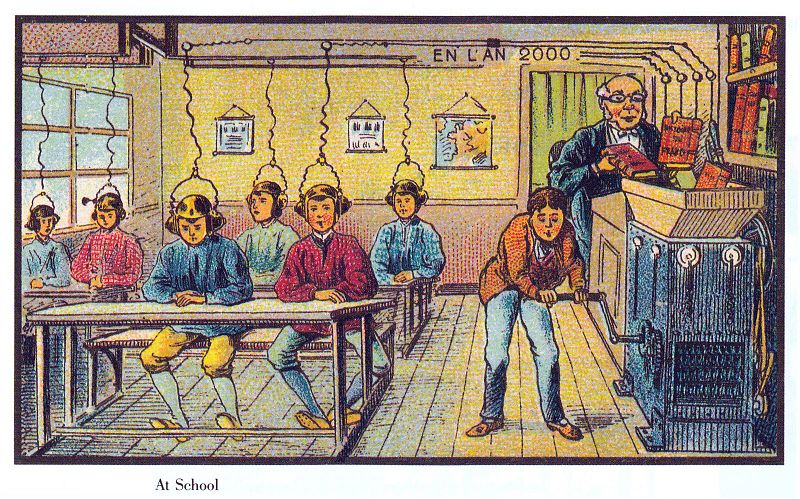
Atomic physicist Niels Bohr is famously quoted as saying, “Prediction is very difficult, especially if it’s about the future.” Yet despite years of getting things wrong, magazines love think pieces on where we’ll be in several decades, even centuries in time. It gives us comfort to think great things await us, even though we’re long overdue for the personal jetpack and moon colonies.
And yet it’s Asimov who apparently owned the only set of postcards of En L’An 2000, a set of 87 (or so) collectible artist cards that first appeared as inserts in cigar boxes in 1899, right in time for the 1900 World Exhibition in Paris. Translated as “France in the 21st Century,” the cards feature Jean-Marc Côté and other illustrators’ interpretations of the way we’d be living…well, 23 years ago.
The history of the card’s production is very convoluted, with the original commissioning company going out of business before they could be distributed, and whether that company was a toy manufacturer or a cigarette company, nobody seems to know. And were the ideas given to the artists, or did they come up with them on their own? We don’t know.
One of the first things that stands out scanning through these prints, now hosted at The Public Domain Review, is a complete absence of space travel, despite Jules Verne having written From the Earth to the Moon in 1865 (which would influence Georges Méliès’ A Voyage to the Moon in 1902). However, the underwater world spawned many a flight of fancy, including a whale-drawn bus, a croquet party at the bottom of the ocean, and large fish being raced like thoroughbred horses.
There are a few inventions we can say came true. The “Advance Sentinel in a Helicopter” has been documenting traffic and car chases for decades now, fed right into our televisions. A lot of farm work is now automated. And “Electric Scrubbing” is now called a Roomba.
For a card-by-card examination of these future visions, one should hunt out Isaac Asimov’s 1986 Futuredays: A Nineteenth Century Vision of the Year 2000, which can be found on Amazon right now. (Or see the nice gallery of images at The Public Domain Review.) And who knows? Maybe next year, your order will come to your door by drone. Just a prediction.
Note: Note: An earlier version of this post appeared on our site in 2015.
Related Content:
Author Imagines in 1893 the Fashions That Would Appear Over the Next 100 Years
In 1900, Ladies’ Home Journal Publishes 28 Predictions for the Year 2000
Ted Mills is a freelance writer on the arts who currently hosts the FunkZone Podcast. You can also follow him on Twitter at @tedmills, read his other arts writing at tedmills.com and/or watch his films here.
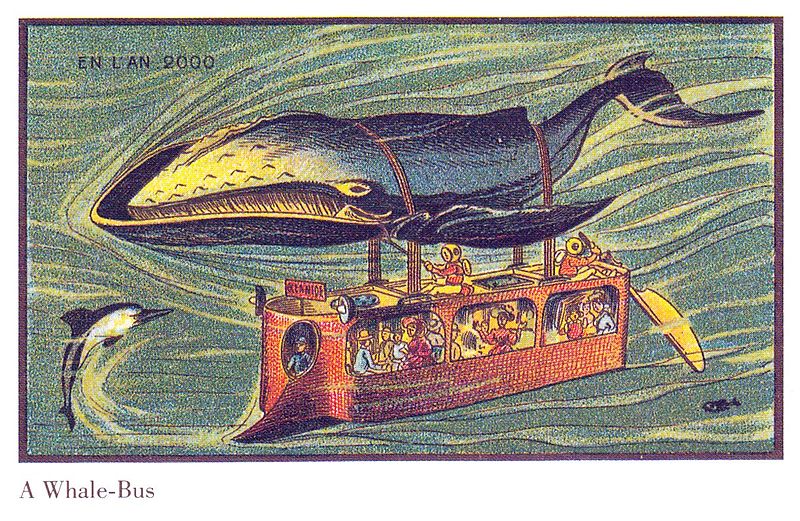
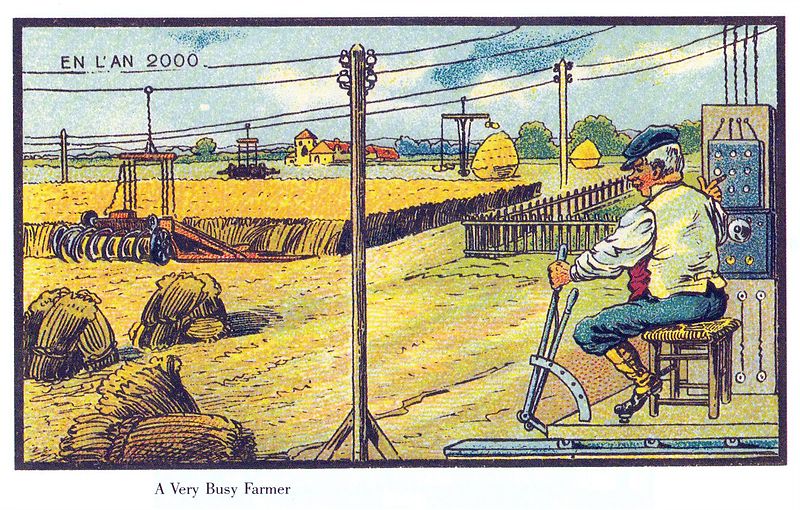
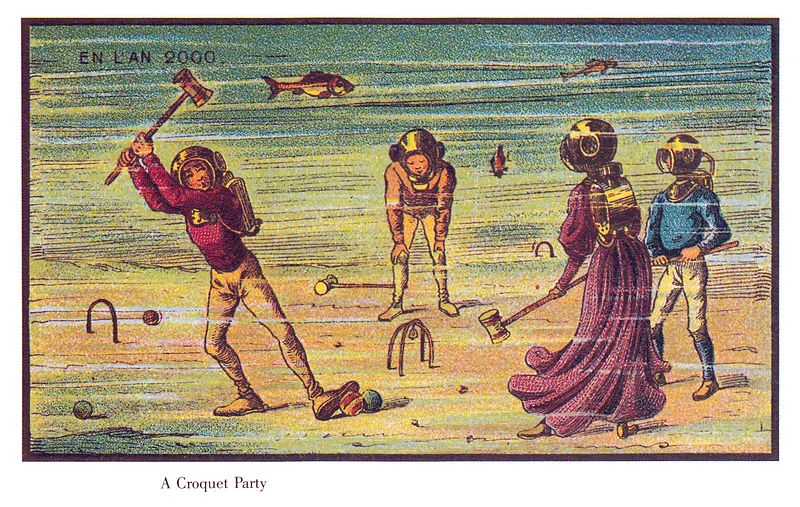
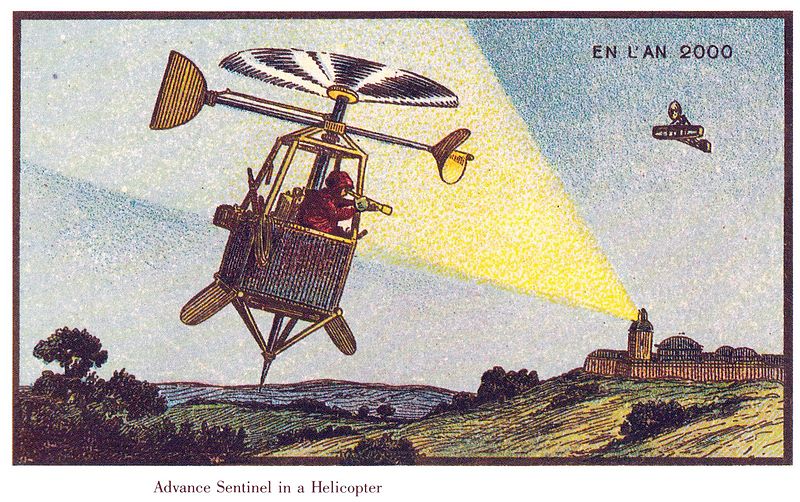



That 1st card could be split in half and both halves would be dead nuts on, in different contexts/environments. The left half is most kids in schools pretty much everywhere these days, and the right half is Florida’s (and several other Right Wing states’) lawmakers and school administrators. There just isn’t any wire connecting the destroyed knowledge to anything.
Look at all that extra stuff attached to the broom handle. That particular piece of artwork is both interesting and unintentionally funny. I hope the late artist will forgive for poking fun.
Good God man I’m here to see wacky ideas from the past. Please take your partisan soapboxing to some other place.
He’s turning in his grave and dares you to publish your predictions for 2124.
The administrator cranking the books is wearing an Orange coat. See? Orange man Bad!
Related: french early 20th century author Rene Barjavel predicted the information age with ubiquitous TVs (portable ones awfuly looking like our smartphones) — enabling populist politician and other trends in our current world. C.f. https://www.youtube.com/watch?v=ZKfOcR7Qbu4
It’s going to be a long 8 months for you.
For some reason these paintings make me a little horny.
Free speech can hurt when it’s someone else’s, baby.
I think Charlie might have misunderstood the picture of the school room. The teacher wasn’t destroying books but rather aim by then to the machine to be turned into audio output due the students.
Part of reaching our net-zero carbon emissions goals will have to include Whale-Buses for transportation. For a greener future.
🎶In the year two-thousand.… in the year two thousaaaand! IYKYK
They definitely had some whimsical ideas. Sadly, many kids could care less about books, it takes away from their droning tiktok time. But… in 2000 kids were reading books 📚 they were also riding bikes and spending good amounts of time active. Aww the good ol’ future past 😌
Giggty
These all happened by the 2020s I’m sure somebody has even played scuba croquet.
But we have autopilot on tractors
Roomba
Helicopter tours
Submarine tours (with limited success sometimes)
And audio books
Me get horny too. Maid is using big sex machine.
Steampunk before it had a name!
Hi there, I believe that the reason there was no evidence of artists and people thinking about space travel is at that point. The ocean was still a huge undiscovered frontier that was right in front of them was absolutely fascinating. Exotic and terrifying all at once
Now we have explored and discovered a lot of what’s happening in the big, huge ocean and we don’t think of it as an exciting frontier
This is a great article. Thank you very very much for posting!
Sunday newspaper comic strip “Dick Tracey” had wrist phones.
That is funny thinking when the right are just protecting children from obscene games and controls and programing their minds which the democrats used to do
No knowledge has been destroyed. At all. There haven’t been book burnings. Everything they removed from the grammar school curriculum is available from a thousand online sites. Parents can teach children whatever they like at home. Shouldn’t our tax dollars be spent teaching math, science and reading, for example? The kids can barely read and can’t add and subtract or tell time without a digital watch or a phone but it’s ok to teach them a particular agenda. Children would be better served learning how to budget and balance a bank account. That should be on the curriculum.
… the greater good! 🤣
“They don’t teach you how to manage money, because they never expect you to have any.”
- Dame Dash